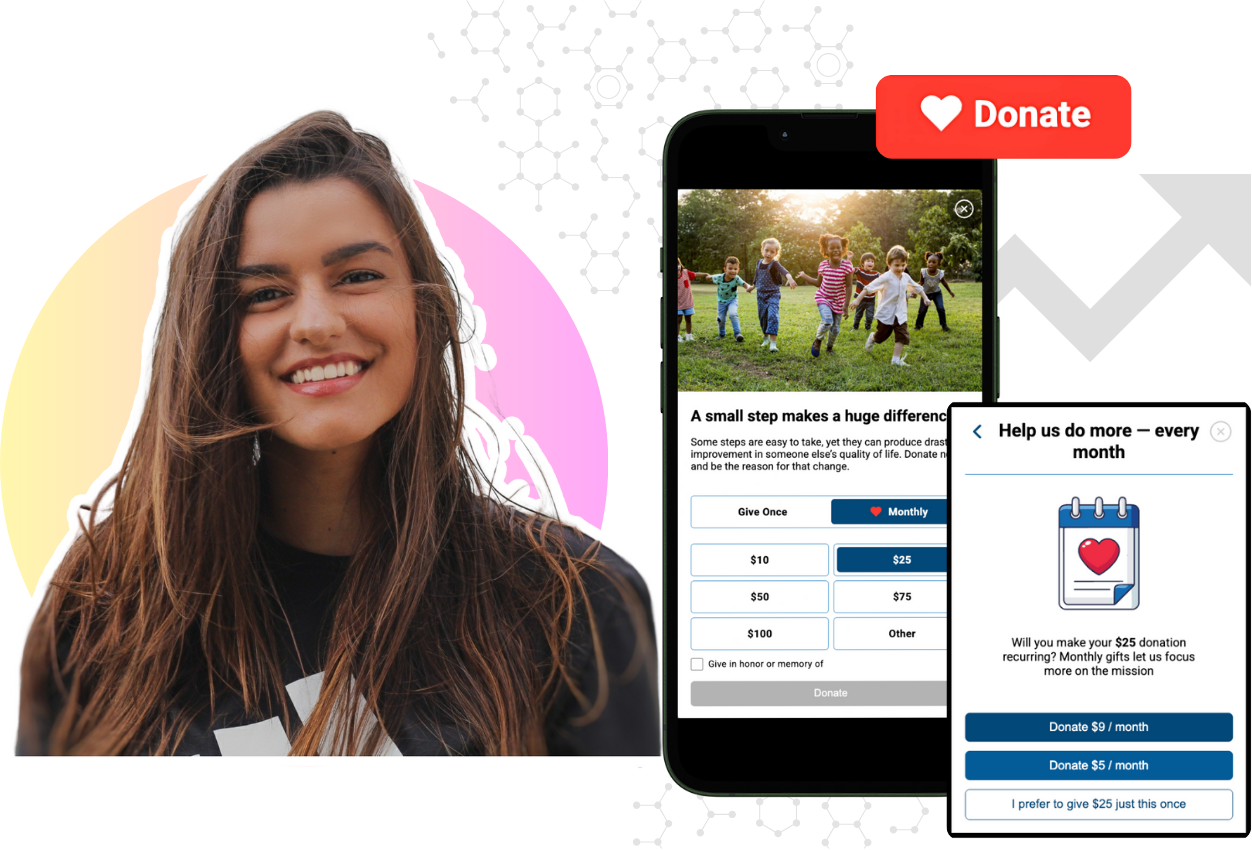7 Tips for Texting Donors During Giving Season
Your nonprofit organization should send text messages to donors this holiday season. You can reach people where they’re at, and it’s an incredibly...

Mobile-First Pop-Up Donation Form
Launch mobile-first pop-up forms in minutes, use built-in tools to capture more donations, and optimize the giving experience—no dev team required.
New to online donation pages for your nonprofit? Start here.
Donation page A/B testing - no science degree needed.
Keep your donation page loading fast - and drive higher conversions.

The 4 Types of Online Donation Experiences
89% of donors leave without giving. Learn how to use the right donation form to close the gap and boost conversions.

Donors are consumers first. As consumers, they receive a steady stream of marketing and sales messages, not all of which grab their attention. The ones that do are successful because they invoke familiarity and trust. These messages share several important characteristics.
They’re personalized across several dimensions. First, the businesses behind them understand the hectic, pressurized nature of daily life. They arrive bearing consistently relevant content at a time of day when they’re most likely to be seen and read. Everything from their design to the overall tone of the content is instantly recognizable. They deliver a smooth, intuitive user experience that encourages interaction.
As consumers, donors have come to expect this level of personalization as part of a positive brand experience. When consumers put their donor hats on, they expect the same level of personalization in their nonprofit communications. Unfortunately, that’s usually not the case.
Nonprofits that haven’t applied these principles in their digital fundraising communications are missing out on the opportunity to build a transformative level of trusted relationships with donors.
Roughly 50% of the public has complete trust in nonprofits. That stems in part from stubborn issues like transparency and accountability. Additionally, an important culprit for NPOs is their tendency to provide an uneven, off-putting experience in their digital communications.
It’s common to run into a user experience that’s complicated, counterintuitive, with an inconsistent look and feel. What’s missing is the consistently smooth, intuitive user experience common in the consumer world.
A few examples from the consumer marketing world illustrate how businesses mine customer data for insights and combine these with the principles of personalization to build a consistent brand experience in all of their communications.
The tech and media behemoth wrote the book on brand consistency by creating a seamless experience across every iteration of its brand and products. Likewise, NPOs can cultivate a positive donor experience by establishing and maintaining uniform expectations in all their donor interaction.
The online vacation rental marketplace uses the airy, clean design of its online presence, including its messaging, to convey clarity, transparency, and trust. This includes answering key questions consumers can be expected to ask before they ask them. For NPOs, the job of establishing trust and transparency can begin with the aesthetic values reflected in design.
Peloton demonstrates how intentional and relevant communications can be a game changer in revolutionizing the at-home fitness industry. Its flagship Peloton Bike, an at-home exercise bike, uses video, audio, and live-streaming so customers can dial in their preferred routines.
These are just three examples of how a nuanced approach to personalization, attention to look and feel, and an intuitive user experience combine to forge a distinct customer relationship.
How does your digital user experience compare to the digital experience that donors are using in their daily lives?
iDonate equips NPOs with the tools and processes to strengthen their ties with recurring donors, accelerate conversions, and achieve sustainability. Visit iDonate to learn more.

Your nonprofit organization should send text messages to donors this holiday season. You can reach people where they’re at, and it’s an incredibly...

On a daily basis, we all see how businesses in the for-profit world build relationships with consumers by addressing the interests, lifestyles, and...

Evidence supporting the critical importance of investing in the donor experience has never been more apparent. Most NPOs, however, are not acting on...